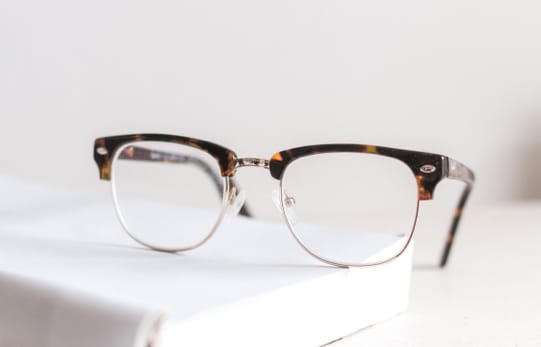Identifying a Vision Problem With Your Child
Suppose your child sees 20/20, but struggles with reading and homework. Maybe your child isn’t doing as well in school as you know they can do. You feel like there’s something else going on. We can help you help your child.
After a comprehensive children’s eye exam, if we see signs or symptoms of a learning-related vision problem, our eye doctors will perform additional tests during a developmental vision exam that can quickly and easily pinpoint specific vision problems.
“My child is bright, but he’s not keeping up with his peers academically.”
“Nightly homework is such a struggle at our house.”
If you or your child are experiencing visual processing difficulties, our eye doctors in Fort Myers may recommend a course of vision therapy to help correct them.
As well, you may be interested in reading “The Struggling Student” to help understand a child’s struggles and the signs of vision problems.


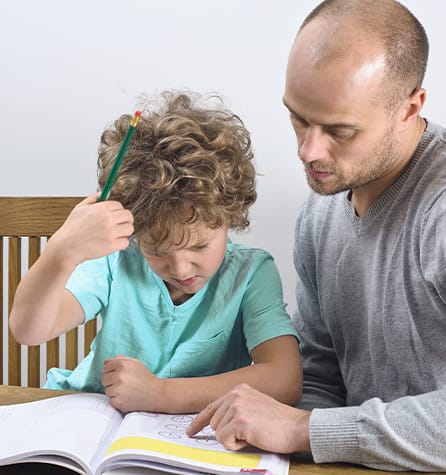

Diagnosing a Learning-Related Vision Problem
First, we do a thorough eye exam, and then, if we detect more vision issues, we do a Developmental Vision Evaluation (DVE). A DVE evaluates eye tracking, eye teaming, eye focusing, visual perception, and dyslexia, among other things.
Once we identify the problem, we will prescribe an individual treatment plan of office-based vision therapy for your child.
Common Visual Errors
- Strabismus (eye misalignment, crossed eyes)
- Amblyopia (also known as “lazy eye”)
- Convergence insufficiency (eyes don’t turn inward when reading as they should)
- Eye muscle weakness
- Interruptions in processing, due to neurological injury or ailment
- Struggling in school and with homework due to visual impairment
- Rereading the same sentence, trouble memorizing due to visual impairment
Common Signs of Visual Errors
- Holding things like books too close
- Closing or covering one eye
- Rubbing eyes (eye fatigue)
- Occasionally seeing double
- Losing place, skipping lines when reading
- Mistaking words with similar beginnings
- Difficulty finding differences in size, shape, or form
Click here for more information.
How Vision Problems Can Affect A Child’s Learning
According to the American Optometric Association (AOA), 25% of all children, or 1 in 4 students, have a vision problem significant enough to impact their learning.
A vision-related learning problem– often called a “hidden disability”– can have the signs, symptoms, and behaviors associated with reading problems such as dyslexia or attention deficit disorders such as ADD/ADHD. That’s why a vision problem should be ruled out first for any child who is exhibiting signs and symptoms of an attention problem.
Many of these vision problems will not be detected during a school vision screening or limited vision assessment as part of a school physical or routine pediatric health evaluation.

How Vision Therapy Works
Once we understand what’s causing your child’s visual processing error, our optometrist can prescribe visual learning activities as part of a custom vision therapy plan. Eye coordination and focusing problems are treatable.
Vision therapy is an office-based treatment program which works to improve how your child’s eyes work together and how your child interprets visual information.
You can help your child reach their full vision potential and get the most out of school, sports, and life with vision therapy! Please see how other parents have helped their children and adolescents by viewing the videos below.
Vectograms (S & Q)
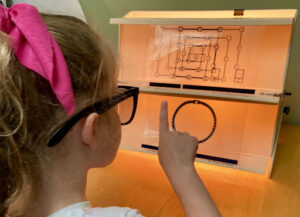
Binocular vision is when your two eyes are able to move properly and allow you to see depth and relationships between objects. Each eye sees slightly different spatial information and transmits these differences to the brain.The major advantage for being binocular (using both eyes) is stereopsis (seeing 3-D).
The S (spirangle) & Q (quoit) pictured are both vectograms. A vectogram is a type of stereoscopic print or transparency viewed by using polarized 3-D glasses. When viewed through polarized glasses it presents one image to one eye and another slightly different image to the other eye. The two images are then fused together by your eyes and brain to see a 3-D image.
Vectograms help patients with convergence and divergence of their eyes. Convergence is when our two eyes move and focus inward on close objects, including phones, computers, and books. Our eyes need to converge (move in together) to see the print on a page clearly, for example. Divergence is when our two eyes move outward again to focus on objects that are farther away, like the whiteboard at school or a baseball coming toward you. Your eyes should be able to converge and diverge easily.
Convergence insufficiency is an eye movement disorder that occurs in about 5% – 8% of children, but for almost all of them, this condition will not be noticed in a school screening, pediatrician’s vision screening, and even in many eye exams. Normally when reading, your eyes converge (move inward together) at the correct distance to aim at the target of a word on a page. But with convergence insufficiency, the eyes converge at the wrong distance, generally one eye moving outward a little, which causes double vision or blurred vision. Most children and parents do not realize this is happening. The child thinks that is how everyone sees words – blurry and double, because they don’t know any different. Parents wonder why their child doesn’t like reading or is having trouble reading even though the child is smart!
Watch this child working on the spirangle vectogram:
YouTube video: https://youtube.com/shorts/SP5-7lM_G1w?feature=share
Crazy Walk
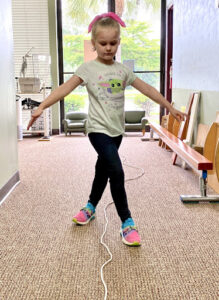
We have our vision therapy patients do many types of therapies and activities. Bilateral integration activities are one of the types we do.They are used to determine if a child is aware of and able to use both sides of the body separately and simultaneously. “Crossing the Midline” of the body is when a person’s arm or leg crosses the middle of the body to the other side, for example, reaching with your left arm to grab something to your right. This helps both sides (hemispheres) of your brain communicate with each other. Bilateral integration and midline crossing activities like this require the full engagement of your brain and strengthen its neural connections. They help with coordination, balance, writing, and even reading, which requires visually tracking words across a line of print on the page. With vision, the eyes need to work together (or “team”) to be able to send the visual information to the brain and process and understand it.
Watch this 6-year-old doing our “Crazy Walk” activity to help strengthen those visual brain connections:
YouTube videos:
Brock String
 The Brock String exercise is used in vision therapy for problems such as convergence insufficiency, amblyopia (lazy eye) and strabismus (eye turn), and to improve double vision, blurred vision, headaches, dizziness, and imbalance.
The Brock String exercise is used in vision therapy for problems such as convergence insufficiency, amblyopia (lazy eye) and strabismus (eye turn), and to improve double vision, blurred vision, headaches, dizziness, and imbalance.
Convergence occurs when both eyes are focused on the same object or image at the same time. Convergence insufficiency makes it difficult to maintain focus on a near object or image and can lead to double vision, eye strain, and reading difficulties.
Suppression occurs when the brain decides to partially or almost completely ignore the visual signals coming from one eye in order to avoid double vision. This can lead to lazy eye (amblyopia) or strabismus. The sooner this is treated, the better.
The goal of the Brock string exercise is to improve binocular vision, eye teaming, and eye coordination at all distances. The patient focuses on different beads on the string that are varying distances away. This causes the patient’s eyes to converge (move inward to focus on the closer bead) and diverge (move back outward to focus on farther beads). The patient is asked questions about what she sees, such as what the string looks like when focusing on different beads. The beads are moved along the string to increase the patient’s vergence, or ability to converge and diverge her eyes.
Here is a short video of one phase of Brock String therapy on a 6-year-old:
YouTube video: https://youtube.com/shorts/uHm69hAujiE?feature=share
Letter Tracking
![]() Visual discrimination is one of the many visual processing skills needed for your eyes to make sense of the world. It is the ability to identify and recognize the likeness and differences of shapes, forms, colors, and positions of objects (including letters and words). Problems that may be caused by the lack of good visual discrimination include letter reversals (like p, q, b, d), word reversals (like was, saw) skipping or substituting letters or words, left to right directionality, and jumping around over the page with the eyes.
Visual discrimination is one of the many visual processing skills needed for your eyes to make sense of the world. It is the ability to identify and recognize the likeness and differences of shapes, forms, colors, and positions of objects (including letters and words). Problems that may be caused by the lack of good visual discrimination include letter reversals (like p, q, b, d), word reversals (like was, saw) skipping or substituting letters or words, left to right directionality, and jumping around over the page with the eyes.
Letter tracking activities improve letter recognition and eye movement skills required for reading: short term visual memory and visual discrimination, fixations (holding the eyes steady while looking at a letter or word), left-to-right directionality, peripheral awareness, word recognition, and saccadic eye movements (small, precise jumps from one word to another and from one line of print to the next one below it). Having the patient use different flippers during letter tracking helps train the eyes to focus better, converge (both eyes moving inward together to focus on a close-up object such as a word on the page), and diverge (both eyes moving back outward together to focus on an object in the distance such as the whiteboard at school). One out of eight children suffers from convergence insufficiency, which means their eyes do not properly move inward together when they focus on a word they are reading. This makes reading difficult! Letter tracking is one of the many therapies we use in vision therapy to help the eyes work as a team and focus together.
Watch this 6-year-old doing a letter tracking activity:
YouTube video: https://youtube.com/shorts/lZesL88ykF0?feature=share
Peg Rotator
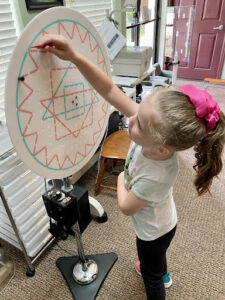
Visual tracking is the ability to control the eye movements using the oculomotor system (vision and eye muscles working together). Both eyes must work as a team.
There are two types of tracking: maintaining your focus on a moving object and switching your focus between two objects. The peg rotator is used to help patients with their eye-hand coordination and eye tracking so they can better control how they move their eyes. Eye tracking is key to reading, coordination, posture control, and body awareness.
In vision therapy, we vary the peg rotator therapies in the following ways:
- Direction and speed: We vary the direction of the rotations, then gradually increase the speed of the rotation.
- One eye at a time: We patch the left eye to help the right eye’s tracking; then we patch the right eye to help the left eye’s tracking.
- Both eyes, but seeing different views through special prism glasses: This disrupts their normal binocular system and “resets” their faulty system. Both eyes are ON but working independently (they each see a different view of the rotator).
- Both eyes without prism glasses.
The peg rotator trains (or retrains) the eyes to aim together for varying distances in space. It improves tracking for reading and sports. It helps patients who are suppressing, or shutting off, some or most of the vision in one eye.
Here is a short clip of a 6-year old using the peg rotator with both eyes, the third phase of rotator therapy:
YouTube video:https://youtube.com/shorts/6rJ_CqsvAKY?feature=share
Loose Prism Jumps
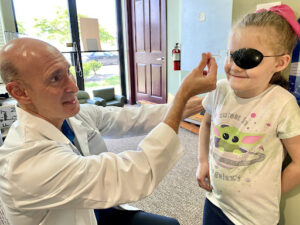 Fixation is the ability to aim the eyes to a particular spot accurately. Pursuit fixation is the ability to follow a moving object with the eyes. It is important to be able to regain focus quickly when an object moves. Reading involves accurately moving the eyes from word to word, a task many children can struggle with. Most sports involve tracking a moving object like a ball and judging its distance and speed.
Fixation is the ability to aim the eyes to a particular spot accurately. Pursuit fixation is the ability to follow a moving object with the eyes. It is important to be able to regain focus quickly when an object moves. Reading involves accurately moving the eyes from word to word, a task many children can struggle with. Most sports involve tracking a moving object like a ball and judging its distance and speed.
A therapy we use to help with fixation (keeping your eyes on target) is called Loose Prism Jumps. Prisms are triangular lenses that alter the apparent location of an object. When you look through a prism, the object will seem to shift from the object’s true location. 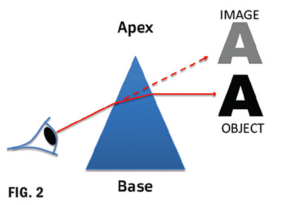
During this therapy 1 eye is patched, and the patient uses the other eye to look at a distant target about 12 feet away. A prism is placed before the uncovered eye. Because the prism displaces the image of the fixation object, the patient must quickly and accurately regain fixation. We ask the patient which direction the target moved to tell if they were able to quickly regain fixation.
Since we start with larger, thicker prisms, it’s easier for the patient to notice the movement. But we gradually lower the magnitude of the prism since the goal is for the patient to be sensitive to very small amounts of prism and noticeable differences in movement of the target. Loose prisms help to train our eyes to turn in and out and improve the accuracy and speed of our eye movements. This is helpful in reading and playing sports.
Here is video of Dr. Dalesio and Loose Prism Jumps therapy:
YouTube video: https://youtube.com/shorts/hkGJm4a1HrA?feature=share
See Us For Yourself
Find us on College Parkway between Winkler Road and Premiere Boulevard. We’re located east of the Cape Coral bridge. We serve Fort Myers, Cape Coral, Estero, Lehigh, and surrounding areas.

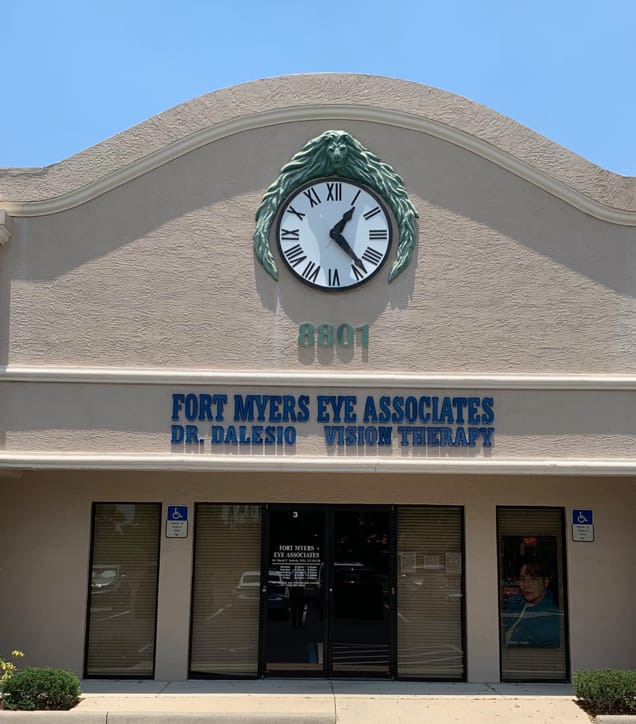
OUR LOCATION
- 8801 College Parkway Suite 3
- Fort Myers, FL 33919
CONTACT US
- Phone: 239.437.2004
OUR HOURS
- Monday: 8:30am – 5:30pm
- Tuesday: 8:30am – 5:30pm
- Wednesday: 1:00pm – 8:30pm
- Thursday: 8:30am – 5:30pm
- Friday: 8:30am – 4:30pm
- Saturday: Closed
- Sunday: Closed
Our Services
Our Brands



